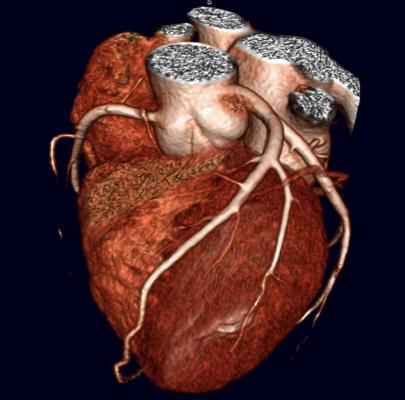
October 10, 2013 — Critical Diagnostics announced that results of the Heart Failure: A Controlled Trial Investigating Outcomes of Exercise (HF-Action) study published in the American Heart Association’s (AHA’s) Circulation: Heart Failure demonstrates that levels of the biomarker ST2 are predictive of long-term outcomes for people suffering with heart failure and identify those patients who may benefit from exercise.
Duke Clinical Research Institute investigators evaluated 912 subjects as part of a large, multicenter, randomized study of exercise training in well-treated ambulatory heart failure patients. They followed the subjects followed for 32 months. In multivariable models, ST2 remained a significant predictor of outcomes after adjustment for clinical variables and the natriuretic peptide biomarker NT-proBNP. This association was particularly strong for cardiovascular dea th and heart failure hospitalization, consistent with ST2's role as a cardiovascular risk marker.
Almost all patients in the study (95 percent) were receiving beta blockers and three-fourths were also on angiotensin-converting-enzyme (ACE) inhibitors. Besides medication, exercise is another treatment option often recommended for heart failure patients to help improve symptoms and lower risk of adverse outcomes or death, but it has never been clear which patients would benefit most from exercise.
“Of the endpoints tested, there was a statistical interaction between exercise training and the outcome of all-cause mortality, such that patients with lower ST2 levels were more likely to have a benefit of exercise training than were patients with higher levels,” noted the authors.
Researchers also found that increased levels of ST2 were strong predictors of cardiovascular events.
“Elevation of ST2 was significantly associated with long-term outcomes . . . These associations were relatively robust for disease-specific endpoints (cardiovascular death and heart failure hospitalization) in traditional multivariable modeling, persisting even after comprehensive covariate adjustment including demographics, clinical variables and NT-proBNP.”
ST2 was recently included in the 2013 American College of Cardiology (ACC)/AHA Guideline For The Management of Heart Failure, recognizing ST2 as “not only predictive of hospitalization and death in patients with HF but also additive to natriuretic peptide levels in (its) prognostic value.”
The study supports the recommendation. When considered along with NT-proBNP, as four groups based on NT-proBNP levels above or below the median level for NT-proBNP and ST2 levels above or below the standard U.S. Food and Drug Administration (F.D.A.)-cleared 35 ng/mL cutpoint, patients with both markers elevated had nearly a six-fold increased risk of death during the course of long-term follow up, compared to those with neither marker elevated.
The ST2 findings in this study contrast that of Galectin-3 by BG Medicine. A separate paper (“Galectin-3 in Ambulatory Patients with Heart Failure: Results from the HF-ACTION Study”) published in Circulation: Heart Failure, using the same HF-ACTION study cohort, claimed, “In a final model adjusting for all predictors of the primary endpoint in the HF-ACTION dataset as a whole . . . as well as NT-proBNP, there was no evidence for an independent association between galectin-3 and outcomes."
The study went on to add, “Given the unique nature of the randomized intervention in the HF-ACTION study (exercise training), we examined the interaction between baseline galectin-3 levels and treatment assignment. There was no significant interaction between galectin-3 levels and exercise training for any of the three study endpoints (all-cause death or hospitalization, cardiovascular death or cardiovascular hospitalization, and for cardiovascular death or heart failure hospitalization).”
For more information: www.criticaldiagnostics.com


 November 12, 2025
November 12, 2025 









